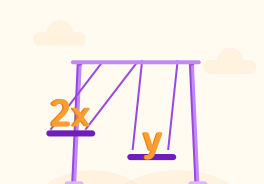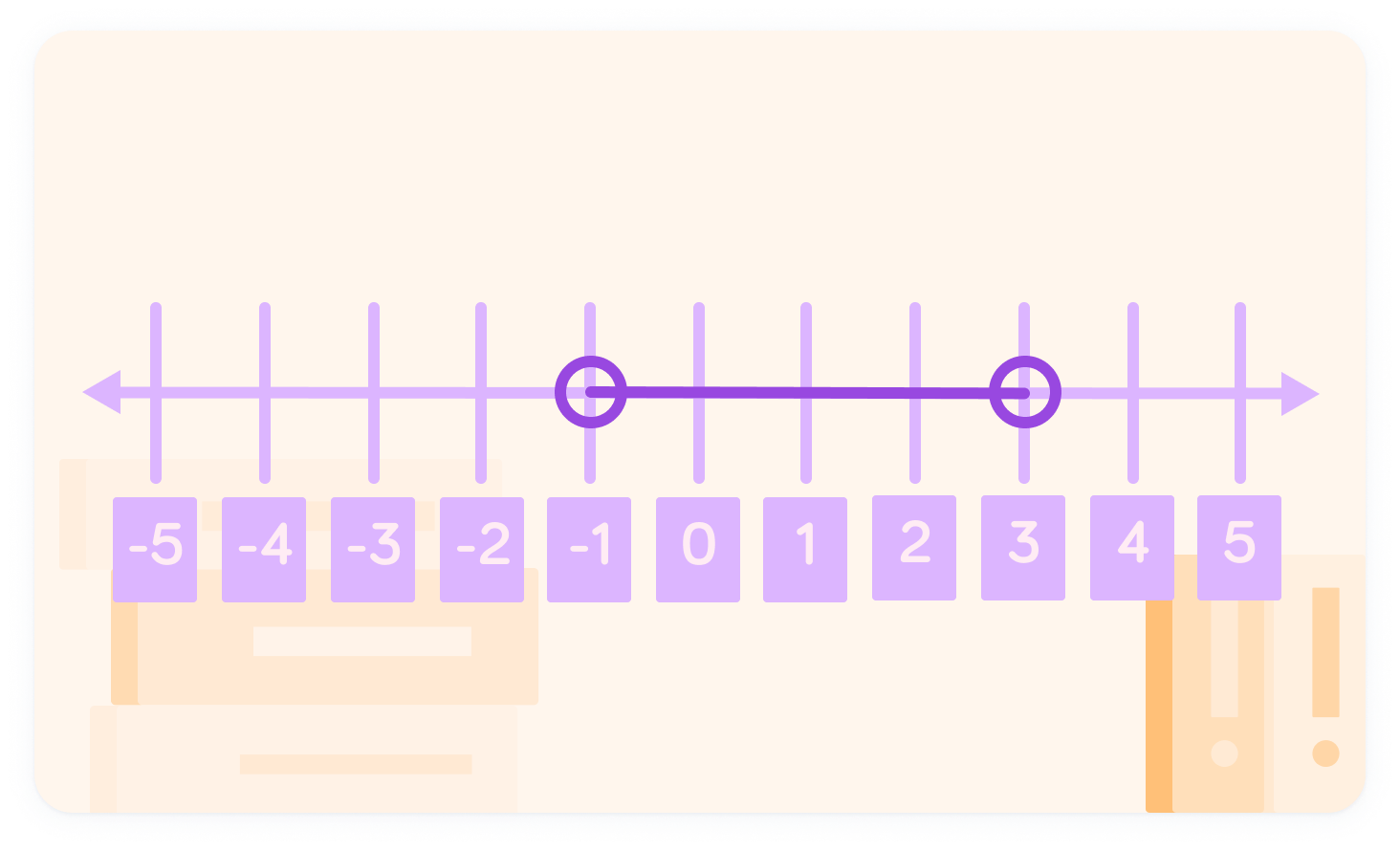YOU ARE LEARNING:
Linear Inequalities 2

Linear Inequalities 2
Linear inequalities may contain more than one inequality sign, or multiply variables.
Sometimes you will have to solve inequalities with two inequality symbols. It is best to think about these as two separate inequalities.
3<2x+5<11
This can also be thought of as: 2x+5>3 and 2x+5<11
What is this inequality the same as?
2<3x+11<26

In order to solve an inequality with two symbols, we need to solve each individual inequality.
Let's solve 3<2x+5<11
Start with the left side
3<2x+5
Subtract 5 from both sides for 3<2x+5

Divide both sides by 2 for 2x>−2

Now tackle the right side
2x+5<11
Subtract 5 from both sides for 2x+5<11

Divide both sides by 2 for 2x<6

Put these two results together
Our individual inequalities give the answers x<3 and x>−1. We can combine these into a single inequality, so the final answer is −1<x<3.
We can show −1<x<3 on a number line
The open circle indicates that the inequality does not include -1 or 3.

Solve this:
2<3x+11<26

Now solve 1<4−x<20

We can also have inequalities with more than one letter.
y=2,4,6,8
x=1,3,5,7,9 What is the range of x+y?
Find the smallest value of x+y
This involves using the smallest value of each variable.x=1 and y=2$$y=2\rightarrow$$y=2\rightarrow1+2=3
Find the largest value of x+y
Now we need to choose the largest values of each variable.x=9 and y=8$$y=8\rightarrow$$y=8\rightarrow9+8=17
These are the upper and lower bounds for x+y
Each of the other values of x+y will be between the upper and lower bounds.
Make an inequality
The upper bound is 17, so x+y≤17. The lower bound is 3, so 3≤x+y. We can arrange these two inequalities into a single inequality3≤x+y≤17
Check that 3≤x+y≤17 matches the values
Have a look at the values given in the question. Does this inequality seem possible? It looks like it is, so we can confirm this is the final answer!
